The Powerful Zulu King
In the 1820’s in South Africa, the powerful Zulu king, Shaka, rose to power along the east coast of South Africa. The entire region was in a state of upheaval and conflict. Rather than risk a battle with the powerful Zulu army, many tribes left their ancestral lands and moved away, only to displace other tribes, thus creating a domino effect.
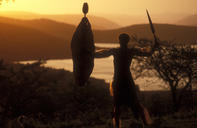
This was one of the causes of a turbulent era that came to be called the Mfecane (the crushing). As part of Shaka’s military offensive, he sent one of his generals, Mzilikazi, up onto the highveld to subdue the Sotho chief, Ranisi.
Mzilikazi decided that he quite liked the wide open plains and had little trouble beating the peaceful Sotho and Tswana tribes into submission, so he decided to break away from Shaka and form his own nation, the Matabele (or Ndebele). However, Mzilikazi feared reprisal from Shaka and took his people further west, into the region around the Cradle of Humankind.
The Lost City
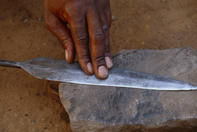
He established his capital, Kungwini, near present-day Pretoria and he built a residence, Dinaneno, near Hartebeespoort Dam. The impact of the local tribes must have been significant, as several caves in the Cradle of Humankind show evidence that cattle were hidden there to avoid the beady eyes of the marauding Matabele.
There are also contemporary accounts of white travellers in the region who mention stone-walled villages that seemed to have been abandoned. Some claim that this is where hotel-mogul Sol Kerzner got his idea for the ‘Lost City’ development at the infamous Sun City resort – although one doubts whether the BaPo people had the same fondness for kitsch. In 1832, however, the Zulu army caught up with the rebel Mzilikazi, and he had to move again.
This time he went further west into the bushveld around Zeerust and, as they moved, Mzilikazi and his army would come into conflict with just about everyone living on the Highveld, including the Griqua, the Kora and the rebarbative Boers who were trekking up from the Cape.
In 1836, the Boers fought Mzilikazi at the Battle of Vegkop and eventually defeated him (with the help of several tribes) the following year. This drove the Matabele over the Limpopo River into present-day Zimbabwe, where Mzilikazi established his new kingdom, kwaBulawayo, in the Matopo Hills.
The Difeqane
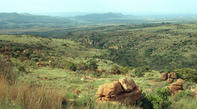
While there is evidence of fighting between the Sotho/Tswana tribes in the decades before Shaka and Mzilikazi, the stability of the region had now been irrevocably shattered and the people found themselves competing for diminished trade and natural resources.
This was called the Difeqane (the time of conflict) and the only people who benefited from the upheaval were the Boers, who had no qualms about taking over large tracts of land from the distracted Sotho/Tswana and establishing productive farms for themselves.
As more and more Boers arrived, the local tribes found themselves caught between a rock and a hard place and, by the 1850’s, the entire region was declared a part of the Zuid-Afrikaanse Republic, leaving the locals without a homeland. One of these disposed tribes was the Po, who had a particularly resilient leader called Mogale.
The Magaliesberg mountains are named after him, as is the town of Krugersdorp, which has been renamed Mogale City. Chief Mogale was a young man when the Matabele first invaded his ancestral lands around the Magaliesberg mountains. Despite some noble resistance, the tribe was forced to flee south over the Vaal.
When the Boers arrived, however, Mogale negotiated with them and together they sent a joint force to rid the Magaliesberg of the feisty Matabele. To thank them for their assistance, the Boers named the region after Chief Mogale, but did not give him back his land. Instead, they offered the Po work on their newly declared farms and settled down to enjoy the fruits of someone else’s labour.
The Appearance of Gold
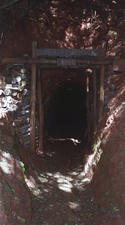
Mogale did not take kindly to this betrayal, and began to get involved in counter-Boer activities such as gun-running. Soon, the Boers started threatening Mogale with military action and he once again took his people and fled to Thaba Nchu, near Bloemfontein.
15 years later, however, Mogale made peace with the Boers and returned with some of his people to the Magaliesberg. But things would still not be smooth sailing. First, the British annexed the Transvaal in 1877, only to give it back to the Boers after their surprising victory in the First Anglo-Boer War of 1880. Then, a few years after that, gold was found on the Witwatersrand (including several finds in the Cradle of Humankind area).
The unexpected appearance of gold in what had hitherto been considered a relatively worthless stretch of farmland caused the British interlopers to look northwards once again, and they soon declared their intention to annex the Transvaal Republic for a second time. The Boers had no choice but to go to war.
Second Anglo-Boer War
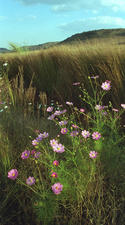
This Second Anglo-Boer War was a much longer and bloodier conflict, which dragged on for several years and gave the world its first concentration camps. Dozens of battles were fought in various parts of the country, and several fierce incursions took place in the hills and passes of the Magaliesberg (notably at the Battle of Dwarsvlei, close to Maropeng).
The Magaliesberg was a strategic barrier for the Boers to hold because it was the only way for British troops in Joburg to communicate with their brethren besieged in Rustenberg. A concrete reminder of this long and bitter war is still visible in the Cradle of Humankind area in the form of Barton’s Folly near Hekpoort.
By David Fleminger